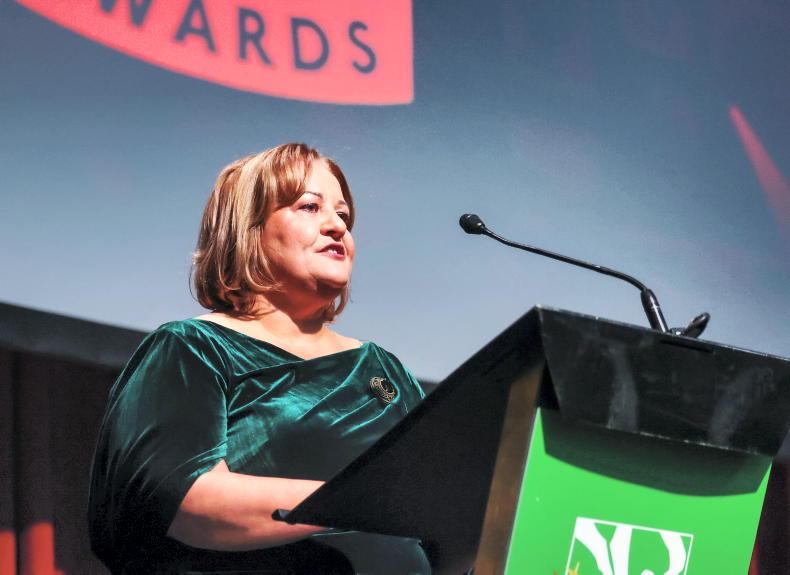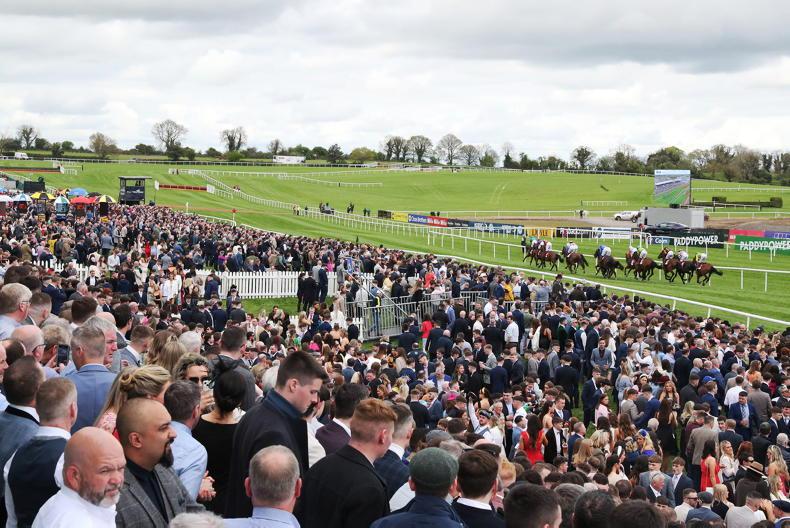“NURTURING success, inspiring participation” is the tag line on the cover of Horse Racing Ireland’s Strategic Plan 2024-2028 which was launched at Punchestown on Tuesday.
The 24-page document sets out HRI’s three main goals and nine strategic priorities for the next five years.
Equine welfare, recruitment of industry staff, increasing public engagement and improving financial sustainability at all levels of the industry for participants are some of the key areas HRI intends to address.
Introducing the Strategic Plan, HRI chairman Nicky Hartery said: “It is vitally important for our industry to share that the annual State investment [in racing] yields a 35-fold return in economic activity. HRI intends to continue delivering this return on Government investment by growing the industry’s economic impact to €3 billion by 2028.”
Suzanne Eade, HRI chief executive, said: “This plan sets out what HRI will do and how the organisation will deliver on strong growth plans for the industry. The Strategic Plan will be supported by a detailed implementation plan which will ensure the organisation is focused on our key priorities. In addition, those priorities will be regularly monitored and the outcomes measured during its life cycle.”
The plan focuses heavily on HRI’s social responsibility to industry employees, the horses and the environment.
Eade added: “Within the lifetime of the plan, we aim to deliver on big capital projects like a people campus, which will service the needs of the wider thoroughbred industry, and providing a pipeline of future human talent. The plan will grow a sustainable workforce and develop Ireland as a global centre of excellence for industry education and training.
“Furthermore, the exciting development of a new all-weather track at Tipperary Racecourse will create domestic opportunities at all levels of the industry as well as providing the marketplace for Irish racing to grow its annual foreign direct investment, currently estimated to be more than €550 million per annum.
“We can expand opportunities for Irish thoroughbreds by growing national and international engagement, targeting new and existing markets.”
The task of implementing the Strategic Plan lies chiefly with Jason Morris, who was appointed HRI’s Director of Strategy last December following 20 years the role of Director of Racing.
Morris told The Irish Field that HRI expects to announce details on the future operation of the Racing Academy and Centre of Education this summer.
Provide consistent and responsible care of our people, our horses and our environment
Inspire and attract future participation nationally and internationally
Nurture success at all levels throughout the industry
Ryan McElligott, Irish Racehorse Trainers Association: “It’s quite expansive - it’s noticeable that the welfare programme is expanding and there are big plans for RACE. I would wonder about prize money levels, however. There is a planned increase in prize money from €69 million to €80 million but there is also a planned increase in the fixture list of roughly 10%. That would leave us struggling to get back to peak prize money levels which is going to be a pressing concern as costs rise.”
Debbie Grey, Irish Equine Centre: “The IEC is delighted to have the backing of HRI as we seek to progress the redevelopment project which we have tried to get over the line for the past seven years and is in the Programme for Government. This involves a brand new public good laboratory to be built on our current site. We await feedback from the Department on our latest submission which will result in a new virology, clinical pathology and environment and nutrition laboratory and a stand-alone pathology unit. Build costs are estimated to be around €16 million for this new facility which would help futureproof the IEC.”
Caoimhe O’Doherty, Treo Eile: “Treo Eile are greatly encouraged to be included in HRI’s Strategic Plan. Treo Eile has grown significantly since inception which is evidence of the commitment and the regard to which the industry embraces aftercare. The cost of running such an organisation is significant but we are proud to be supported and funded by donations from all aspects of the industry. We hope that the publicised commitment of HRI will maintain and grow this financial support.”
Cathy Grassick, Irish Thoroughbred Breeders’ Association: “We were pleased to see that the Strategic Plan recognises the need to support Irish breeders. While the Irish industry is in a good position, there are many challenges ahead and we look forward to working with HRI for the betterment of the Irish industry. The Weatherbys ITBA National Hunt Fillies Bonus Scheme and the IRE Inventive are excellent examples of how schemes can be designed and aimed at a particular sector and really make a difference. The ITBA are always looking ahead to see how we can improve the business of breeding for our members. We welcome the fact that HRI have recognised the importance of the breeder and that they are committed to supporting them.”


 This is a subscriber-only article
This is a subscriber-only article
 It looks like you're browsing in private mode
It looks like you're browsing in private mode









SHARING OPTIONS: